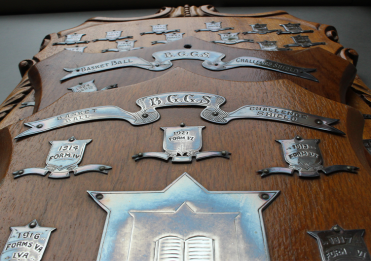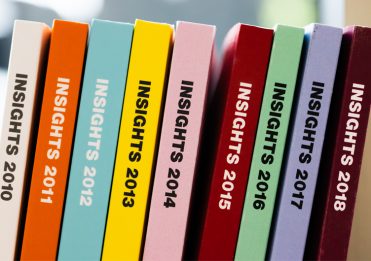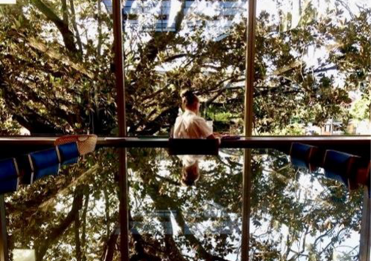As an educator and visionary, Miss Sophia Beanland, Girls Grammar’s fourth Lady Principal (1882–1889), implemented significant advances in broadening Brisbane Girls Grammar School’s curriculum. In particular, she developed the Arts Curriculum—Art, Music and Languages—employing accomplished international teachers. It was her commitment to a balanced education that led to the establishment of the Esther Beanland Medal in 1915. Named in honour of her mother, the medal celebrates the creativity and craftsmanship of many remarkable Grammar girls.
Miss Beanland stipulated that the medal should be for ‘a prize for house needlework’, specifying that ‘the choice of the work done to be the pupil’s own choice, and the prize to be awarded for excellence of design and workmanship’ (Beanland, 1915). Miss Beanland commissioned Allan Gairdner Wyon (1882-1962) of Portland Place, London, to make the Founder’s Copy of the medal, paying 50 guineas for two dies (Begley, 2015). In 2005 the Fitzwilliam Museum of Cambridge University—where Miss Beanland attained her teaching diploma—received a bequest of 119 medals and other items from the daughter of Allan Gairdner Wyon. The medals and other materials came from Allan’s workshop and they are kept together in the Department of Coins and Medals at the Museum (Allen, 2020).
By 1930 the Esther Beanland Medal was being made by die-sinker and engraver, Chas Handford of Mary Street, Brisbane. BGGS has four of the medals in its archives collection: Eleanor Hart’s 1917 medal still in its original Wyon box; Patricia McGregor’s 1924 Wyon medal; Elsie Harwood’s 1930 medal; and Alison Aland’s 1940 medal, both of which were cast by Handford.
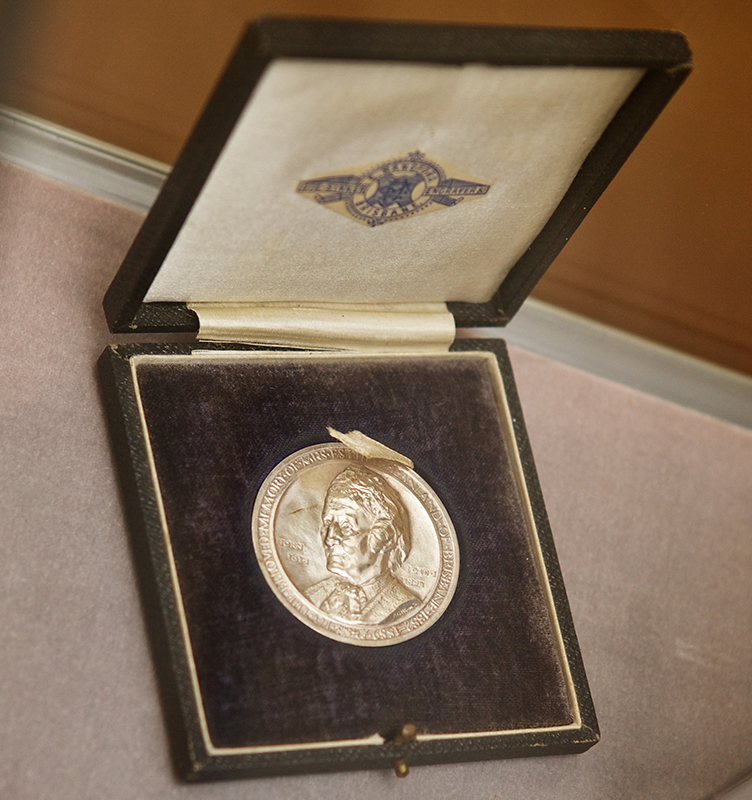
1930 Elsie Harwood Esther Beanland Medal
Over the years the awarding of the Esther Beanland Medal changed with the shift in education trends. Originally a prize for needlework, the prize’s parameters later extended to sewing. 1957 Medal winner, Shirley Appleton (Heath, 1957) was awarded the prize for an infant frock which she has kept to this day. By the mid-1970s the interest in sewing had declined and the prize was not awarded for several years until Principal, Mrs Judith Hancock (1977–2001) reinstated the prize, altering the specifications to include ‘textile design’. Consequently, Julie-Anne Stephenson (1988) would receive her 1987 Esther Beanland Medal for textile design, not sewing. The 1996 medal recipient, Christina Kim (1996), pursued a career in fashion and is a successful Brisbane designer. Christina’s designs celebrate traditional garment making techniques and handmade finishes.
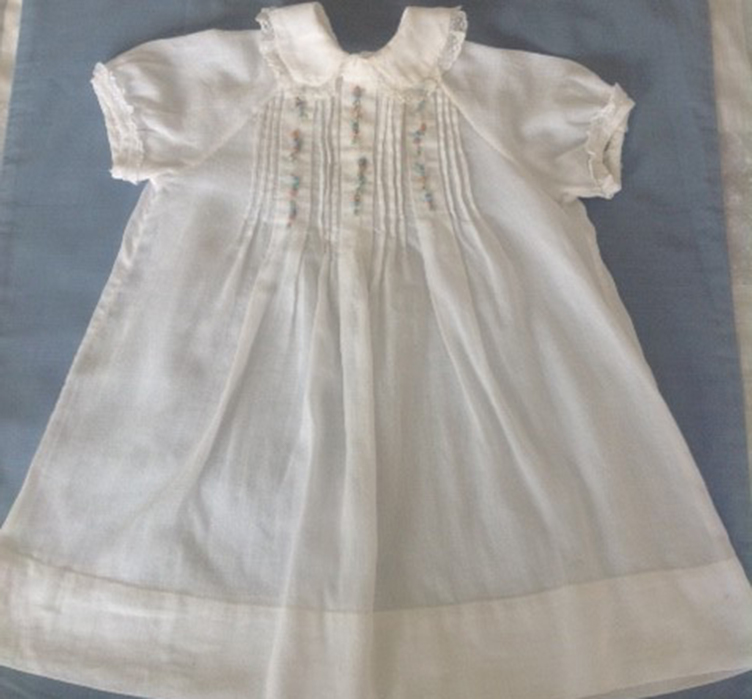
1957 Esther Beanland Prize piece by Shirley Appleton (Heath, 1958)
The most recent Esther Beanland Medal prize winner, Esther McDade (9H), received the award in 2018 for a textile artwork entitled, Coral Fleece. Combining weaving, knitting and crochet, Esther blended textured earthen fibres onto mesh to create a curious and tactile artwork. It was Esther’s ‘Granny’ who taught her the art of knitting and crochet, having come from a rich family history of textile design. Esther’s grandmother’s family were weavers and seamstresses by profession who immigrated from Ayrshire, Scotland to Australia, and worked in a Queen Street shop, sewing women’s clothes. For Esther, the name of her artwork, Coral Fleece, is a play on words, ‘where “fleece” describes the materials used in the artwork but also alludes to the condition of the coral; it is being ‘fleeced’ (McDade, 2020). Esther has generously donated her artwork to the School, and it is the only Esther Beanland Medal-winning piece that the School has in its collection.
Miss Sophia Beanland left more than a prize when she commissioned the Esther Beanland Medal. She left a part of her educational vision, and a tribute to her mother. As the School’s Art Curriculum continues to evolve it is likely that the conditions of the Esther Beanland prize will also change, but the medal’s rich history will remain both in our School’s alumnae and the wonderful artworks created, and in Wyon’s Founder’s Medal in the Fitzwilliam Museum, Cambridge University, where Sophia Beanland’s educational adventure began.
Ms Rachael Christopherson
Head of Beanland House
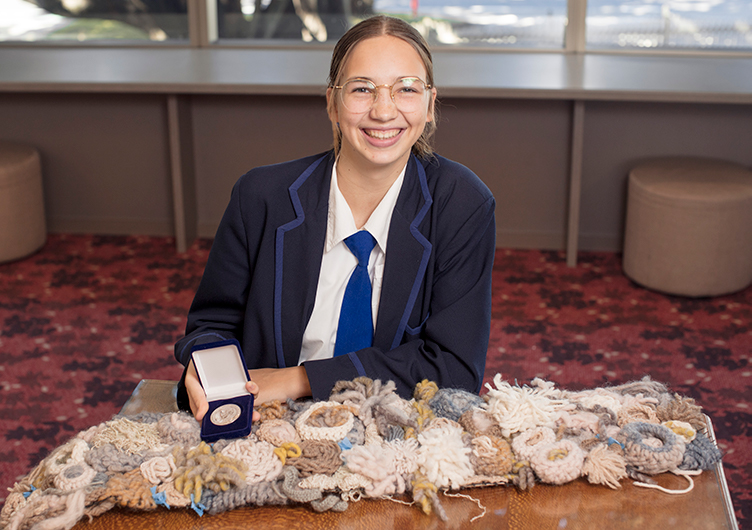
2018 recipient of the Esther Beanland Medal, Esther McDade (9H), displays her medal and winning textile artwork, Coral Fleece
References
Allen, M. (2020, July 23). Department of Coins and Medals, Fitzwilliam Museum, Cambridge. (R. Christopherson, Interviewer)
Beanland, S. (1915, March 12). Letter to the Secretary to the Trustees of the Brisbane Girls’ Grammar School.
Begley, A. (2015). numismatist. (J. Davis, Interviewer)
Hatton, E. (n.d.). Brisbane Girls Grammar School Gazette.
Kim, C. (2020, July). Christina Kim. Retrieved from Christina Kim: https://www.christinakim.com.au/
McDade, E. (2020, July 30). Esther Beanland Medal Research. (R. CHristopherson, Interviewer)
Watson, T. (1992). Digging up the Daffodils: the spade work of Miss Sophia Beanland, lady principal of the Brisbane Girls’ Grammar School, 1881 – 1889. Australian and New Zealand History of Education Society twenty-first annual conference proceedings, (pp. 221-233). St Mark.


